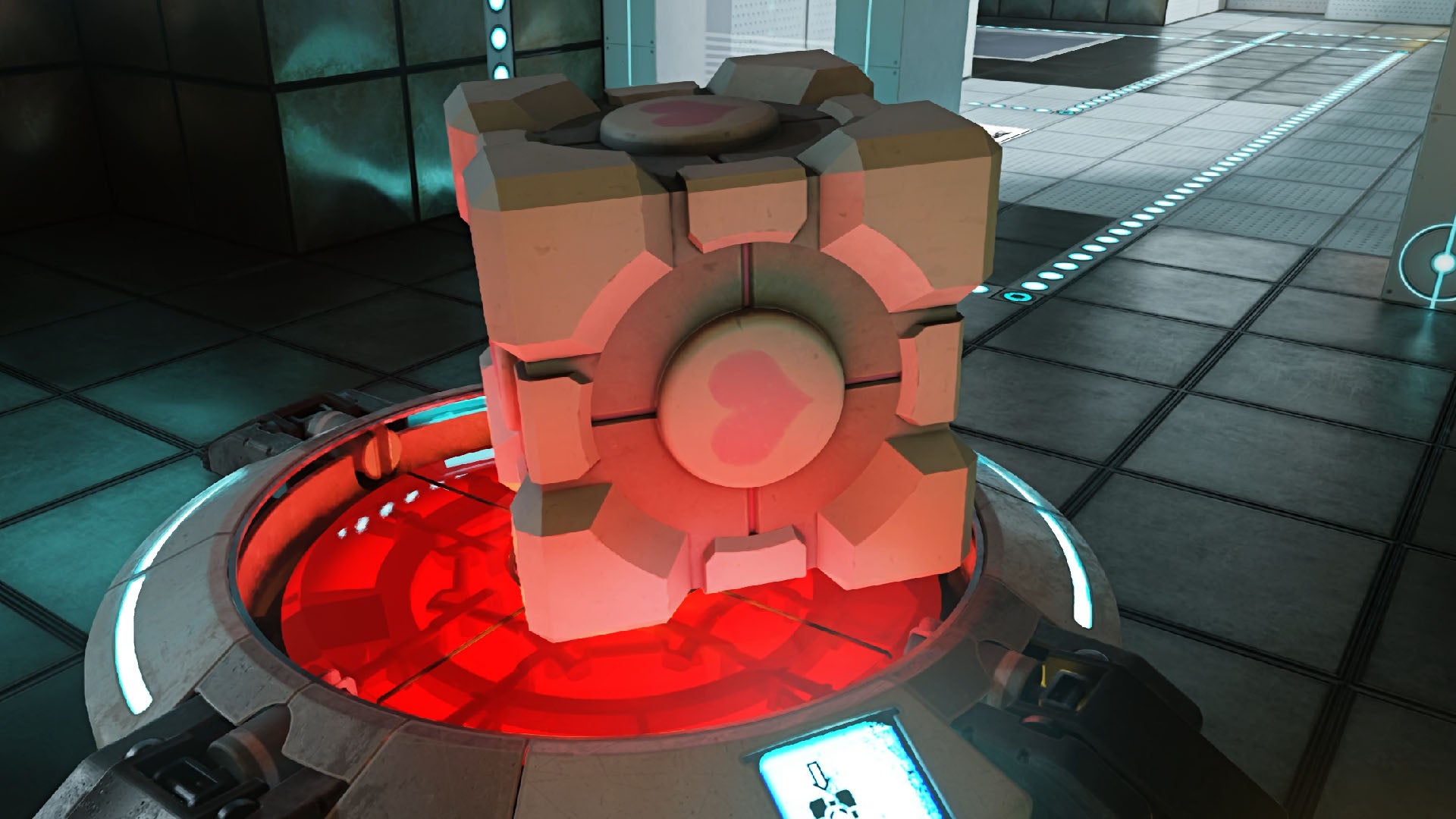Portal with RTX is an absolute triumph, not just for its masterful use of lighting and cutting-edge technology, but also in how it works – which borders on black magic. This new take on the Valve classic is built on a new framework from Nvidia called RTX Remix, which essentially hijacks older PC games built on a fixed function rendering path, replacing rasterisation with full path tracing. Even motion vectors are added, opening the door to TAA, DLSS and even per-object motion blur support.
‘Remix’ suggests some level of user tweakability and that’s exactly what’s possible, showcased beautifully in Portal. With the rendering replaced, lights can be overridden, assets can be swapped out with newly-created alternatives and textures can be made or remade to be physically-based. It is an entire system for replacing a game’s visuals with path tracing that lives entirely outside the game’s awareness and gameplay code. It is honestly astounding that this works at all – and Portal with RTX shows what Remix can do when time is invested in making new assets and tailoring each and every area and asset in a game to work with the new rendering paradigm.
At the basic level, what sets path tracing apart from RT in most games? Titles like Cyberpunk 2077 or Marvel’s Spider-Man Remastered still run on rasterisation but add in RT effects for elements like reflections, shadows, ambient occlusion or global illumination. In Portal with RTX, ray tracing takes over for nearly everything previously rendered with rasterisation. All of the primary rendering is ray traced, so that makes it more expensive to render just to start. However, it does deliver some good advantages for the cost: all glass can be refractive due to the primary rays for visibility bending when they interact with glass, giving them the wavey surface appearance you see in real life. Rays can be traced through the titular portals without the degradation in quality seen in the original version of the game.
Portal with RTX also ray traces all the direct lighting as well, giving real-time shadows and lighting – something completely missing in the original. Objects that move now have shadows that move with them, particles receive the lighting of their surroundings, and emissive surfaces like signs emit light dynamically, whereas the lighting in the original game remained static no matter what happened. Portal with RTX traces all indirect lighting as well, using four bounces on the ultra setting by default. This is why reflections look much better than those in hybrid ray tracing game: the light is bouncing around in the reflections, giving them much better shading. This is also why Portal with RTX can look so different to the original in many scenes.
